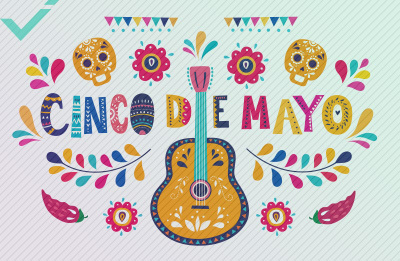Not only does China represent one of the oldest cultures on the planet, but it’s also an exciting, innovative, modern country to visit if you’ve never been. Just take its major shopping holiday “Singles Day” as an example of its robust and active economy. One particularly special feature of this country is its official language, “Standard” Chinese. People in the West often claim how confusing or hard it supposedly is to learn the language, but you should leave all judgements and criticisms at the door.
The truth is, Chinese is becoming more and more popular; for e-commerce businesses looking to tap into foreign markets, having some familiarity with the language of your target region and customer is an essential first step. Take a look at these 10 fun and interesting facts about the Chinese language that you probably never knew!
CHINESE HAS NO ALPHABET
This may seem crazy, but Mandarin (which is the basis of the standard Chinese language) has no alphabet. The writing system is nothing like an alphabet at all, as it doesn’t use letters. Instead, it employs symbols called “characters”, which represent the oldest writing system that still exists in the world today. There is a romanisation system of this language, which is known as “pinyin”. This allows non-native Chinese speakers to learn the language based on a system that’s more familiar to them. Interestingly enough, there is a numerical system in Chinese, which has numbers that are quite easy to read and remember if you practice.
CHINESE HAS PRETTY SIMPLE GRAMMAR
Contrary to popular belief, Chinese grammar is not all that difficult, especially when compared to English and French. No need for gender specifications, conjugating verbs, or verb tenses. Furthermore, the use of singular or plural is the same—no distinguishing is needed; how easy is that? Perhaps people find Chinese difficult to master because it doesn’t contain a segmental alphabet, just standalone characters. This is where pinyin comes in, removing the burden of trying to memorise tens of thousands of characters.
CHINESE SHARPENS YOUR BRAIN
Understanding language is one of the hardest things for your brain to do, particularly as you get older. It can sometimes feel like the ultimate form of mental exercise. And Chinese is one of the best options for speakers to flex their brain fitness. Chinese activates both the left and right sides of the brain to distinguish words from one another that share the same intonation. Research states that those who speak and write in Chinese are able to improve their cognitive abilities, unlike English speakers who only use the left side of the brain for these tasks.

CHINESE HAS OVER 20,000 DISTINCT CHARACTERS IN USE
Chinese consists of thousands of characters. And this number only keeps increasing as new symbols are added in the modern era. Boasting a vast amount of characters totalling around 50,000, modern dictionaries will rarely list over 20,000 in use.
DIFFERENT TONES HAVE DIFFERENT WORD MEANINGS
While all languages have vowels and consonants, some also have tones. Chinese is a tonal language that utilises four tones, which are essential parts of proper pronunciation and are just as important as vows and consonants. It’s these four tones that distinguish between four completely different words/phrases. The tones are generally described as follows: the first tone is flat out, the second tone rises, the third tone falls and rises, and the fourth tone is a sharp fall. To see it in words for a clearer picture, here is the Chinese word “ma”.
Ma 1: mā – mother
Ma 2: má – hemp
Ma 3: mǎ – horse
Ma 4: mà – scold
Ma 5: ma – Quite tricky as this Chinese word doesn’t have a tone, but is used as a tag question.
CHINESE WRITING SYSTEM IS OVER 3,000 YEARS OLD
Chinese is the most ancient of all languages spoken today, with the earliest characters found 3,000 years ago as pictographs. Each contained between 10 and 60 characters and was found engraved on “oracle bones” and turtle shells, later diverging as Chinese characters that were remarkably similar to the development of, say, Egyptian hieroglyphs.
THE WORD “MANDARIN” IS DERIVED FROM SANSKRIT
Mandarin and Sanskrit have a simple relationship. When Buddhism was introduced in China in 67 AD, Sanskrit also brought some new words to Chinese. Mandarin originally refers to a Chinese official and comes from the Portuguese word “mandarim”, which in turn originates from the Sanskrit word “mantrin”, meaning minister. Among Chinese speakers, Mandarin Chinese is often called “guoyu”, which means national language.
THE MOST COMPLICATED CHINESE CHARACTER HAS 57 STROKES
Out of all its varied characters, there is one that stands out from the rest. The word is “biang”, which contains a total of 57 strokes. The word phonetically imitates the sound of noodles slapping against a chef’s table that occurs with the famous biangbiang noodle dish!

CHINESE IS THE ONLY PICTOGRAPHIC LANGUAGE
Today, there are a few pictographic writing systems still in use, but not in mundane life. However, Chinese is the only pictographic language that contains a number of Chinese characters actually drawn from just looking at the world. These were developed using common images, which you can think of in the realm of the game Pictionary. One example is the Chinese word for mountain, “shan”, which written like this: 山. The three points of the character are meant to resemble three peaks of a mountain ridge.
ONE IN SIX PEOPLE SPEAKS CHINESE
Mandarin is one of the fastest-growing languages in the world. With nearly 1.2 billion native Mandarin speakers, Chinese claims roughly 14.4% of the world’s population, making it the most common native language. Jeez, that’s more than Spanish, English, French, and German combined!
IN CONCLUSION
Everyone’s talking about how China is going to take over the world. Whether or not that’s true, expanding your business into Chinese-speaking markets can be a huge asset. But this involves more than just translating your English content into Mandarin. Professional localisation from native Chinese speakers is essential to give your brand the best chance of mass adoption in your new territory.


